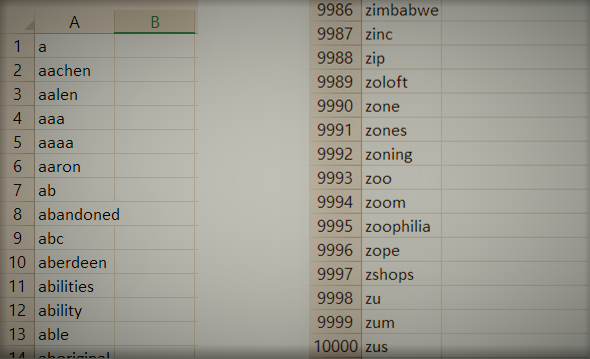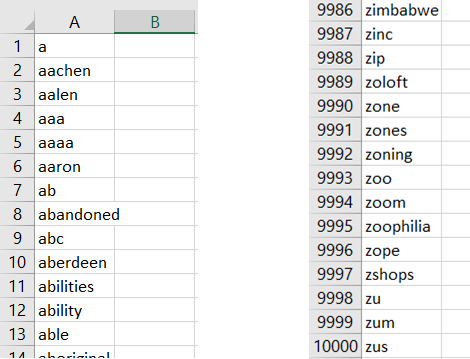A century ago, cryptologist André Langie reported about a really difficult dictionary cryptogram he had allegedly solved? Was it a strike of genius? Or was it a lie? Here is a similar challenge.
In his book Cryptography, Swiss cryptologist and master-codebreaker André Langie (1871-1961) reports on the folowing cryptogram he was asked to solve:
5761 3922 7642 0001 9219 6448 6016 4570 4368 7159
8686 8576 1378 2799 6018 4212 3940 0644 7262 8686
7670 4049 3261 4176 6638 4833 4827 0001 3696 6062
8686 2137 4049 2485 7948 0300 9712 0300 4212 9576
2475 8576 8337 0702 9185
After some basic analysis, Langie concluded that this message had been encrypted in a dictionary code. Apparently, a dictionary with 10,000 entries had been used. For encryption, the author of the message referenced each of the words with its position in this dictionary. This means that, say, 4049 stood for the 4049th word in the dictionary.
As Langie did not know which dictionary was used, he tried to solve the cryptogram using the following table, which contains the proportion of 10,000 words in Webster’s Dictionary classified according their initials:
A 0001 – 0643
B 0644 - 1178
C 1179 - 2160
D 2161 - 2755
E 2756 - 3177
F 3178 - 3599
G 3600 - 3926
H 3927 - 4295
I 4296 - 4717
J 4718 - 4800
K 4801 - 4877
L 4878 - 5216
M 5217 - 5710
N 5711 - 5871
O 5872 - 6109
P 6110 - 6960
Q 6961 - 7019
R 7020 - 7513
S 7514 - 8715
T 8716 - 9298
U 9299 - 9453
V 9454 - 9637
W 9638 - 9929
X 9930 - 9941
Y 9442 - 9971
Z 9972 -10000
Using this proportion table, one can conclude that, say, the number 5761 in the cryptogram probably stands for a word starting with N.
The first word Langie identified was A, which was obviously represented by 0001. Based on the proportion table and frequency considerations, Langie could also identify AND, TO, THE, as well as a few others. Further use of the table, combined with guessing, finally led to the solution of the cryptogram (except the first word). Here’s the cleartext:
???? HAS SECURED A VALUABLE PIECE OF INFORMATION INREGARD TO THE COMING ENEMY OFFENSIVE. I HAVE BEEN REQUESTED TO SEND HIM FIVE HUNDRED POUNDS. IT IS A GOOD OPPORTUNITY TO DENOUNCE HIM. DO SO, AND YOU AND I WILL DIVIDE THE SUM BETWEEN US.
A challenge
There’s no doubt that Langie’s solution of the dictionary cryptogram was an ingenious act of codebreaking – at least, if this story is real. To my regret, there is no way to verify, if this is really the case. I don’t know of any other literature source that mentions this codebreaking success and that confirms that it actually happened. I wouldn’t be surprised, if the whole story was a fake.
While I can’t verify Langie’s report, I certainly can create a similar cryptogram. This is what I did. First, I looked for a text file containing the 10,000 most popular words of the English language. Next, I sorted these words alphabetically (using Excel). Finally, I used the resulting list as a codebook, with each word being referenced by its position in the list.
The word list not only contains full words and some abbreviations, but also the 26 letters of the alphabet (they are treated like ordinary words, which means, for instance, that E stands between DYNAMICS and EACH). If a word one wants to encrypt does not appear in the dictionary list, it can be encoded letter by letter.
Using this codebook, I encrypted a plaintext consisting of about 70 words. Here is the ciphertext I received:
8456 0619 8928 6116 9216 5992 9061 1263 0001 5326 2272 2827
5884 1142 8993 4906 8322 6163 8928 6841 6694 3564 8928 7658
6323 8928 1142 0212 0016 6207 4906 8785 0001 5069 0371 9647
0307 8928 9652 0212 8192 4316 5602 9967 9804 7254 0001 5385
4424 8928 1449 6163 4714 8949 4692 0001 8515 2212 6205 8928
7278 8131 6163 4714 9967 9804 3458 0001 9861 1390 2012 0001
2546 8926 9804 4139 9967 9061 2365 8928 5992 5589
Can you solve this cryptogram? If so, you might be as skilled as one of the best codebreakers of his time. If noone can solve this challenge, this raises further doubts whether André Langie’s codebreaking success was real.
Follow @KlausSchmeh
Further reading: The Top 50 unsolved encrypted messages: 11. The Untersberg code
Linkedin: https://www.linkedin.com/groups/13501820
Facebook: https://www.facebook.com/groups/763282653806483/




Kommentare (12)